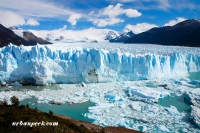Michel Gay: Le temps est venu de développer largement dans le monde une nouvelle source d’énergie: (a) sûre et moins polluante que les combustibles fossiles, (b) ne libérant pas de gaz carbonique, (c) ne gaspillant pas les bases chimiques dont nos descendants auront besoin, (d) peu encombrante et puissante, (e) disponible et abondante.
Herve Nifenecker, honorary chairman of "Sauvons Le Climat" and colleagues in eight countries explain how solutions to the problem of climate change developed in the wake of requirements established by the Intergovernmental Panel on Climate Change (IPCC) make various assumptions we might not be able to address. Attempting to capture and store carbon dioxide from the burning of fossil fuels, coal, natural gas, and oil, in power stations and vehicles involves a massive geological-scale engineering effort even at today's emission rates based on rising energy requirements.
Steven Lyazi is a 23 year old student and day laborer in Kampala, Uganda. He writes about how African countries desperately need more energy from fossil fuels and eventually nuclear power. Working to reduce use of fossil fuels and nuclear is another person of African roots, Barack Obama, President of the United States. He promotes wind and solar for the world. We encourage support for this outstanding young person and others like him from Uganda. It is an effective way to help make a better future for Africans.
Craig Rucker, CFACT: Wind turbine installations impact vast amounts of habitat and crop land. Offshore wind turbines impact vast stretches of lake or ocean and like ships will not the worst ocean storms. Arizona’s Palo Verde nuclear plant generates 3,750 megawatts of electricity from a 4,000-acre site. The 600-MW John Turk ultra-supercritical coal-fired power plant in Arkansas covers 2,900 acres; gas-fired units like Calpine’s 560-MW Fox Energy Center require several hundred acres. All generate reliable power 90-95% of the year.












